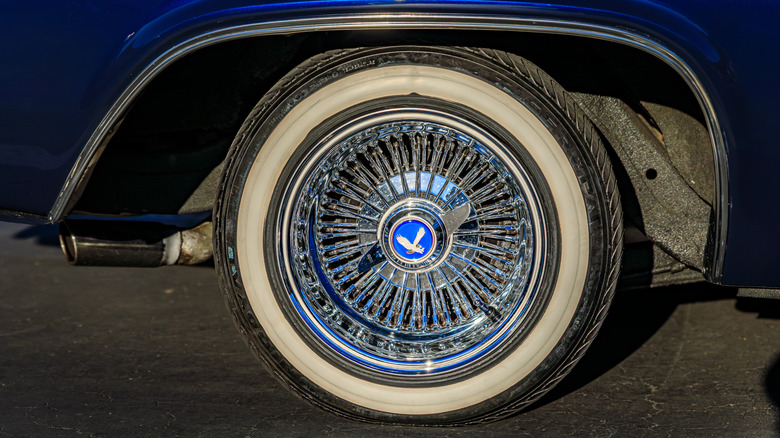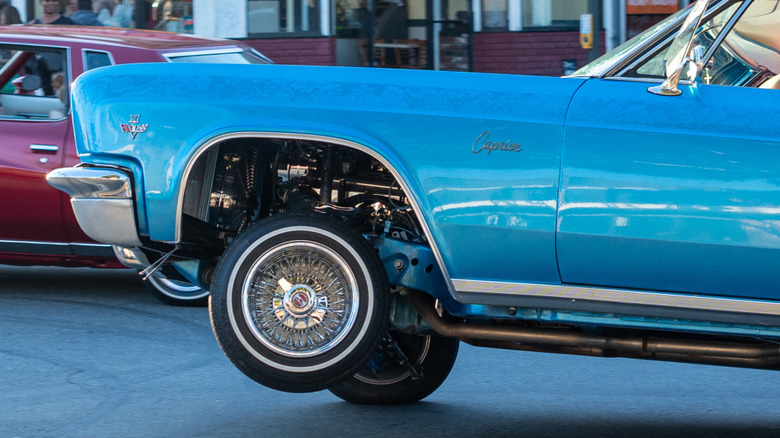What Happens If You Put Smaller Tires On Your Car?
People put smaller tires on their cars for a variety of reasons. There are practical applications, such as choosing run flat over self-sealing tires or normal tires, as some sizes are hard to find. In such cases, using a shorter but wider tire can come very close to the original. If your car has a 225/65 R17 tire, a 235/60 R17 tire is less than a half-inch shorter. However, the speedometer will read too fast by about 1.5%.
Many people go with a smaller tire for aesthetic reasons, though. Sometimes a slightly narrower and shorter tire can emphasize the size of a land yacht, like a Pontiac station wagon from the 1970s. Much smaller tires are par for the course if you are into lowriders with hydraulics. These changes can be more drastic, and the greater the difference from stock tires, the more carefully you should think about taking this step.
The Downside of Smaller Tires
Cars are designed with certain tire sizes in mind. Even if you keep the wheel size the same, substantially changing the tire size can change the geometry of the suspension and as well as the load on both the suspension and drive train. Shorter tires lower the whole car, so ground clearance suffers. The exhaust system in particular can hit the ground more often when going over bumps.
If the car has them, and most modern cars do, the traction control and tire inflation monitor systems can be thrown off by the change. The effect on ABS systems designed for wider tires can be overwhelming for the system's computer. This can increase braking distances, and, if the tire inflation monitor is equally off, then the tire might be uninflated. Coupled with this is a change in handling, usually for the worse, which makes sudden turns and swerves more dangerous.

